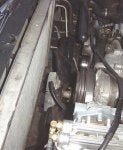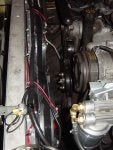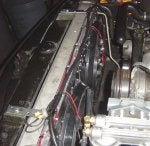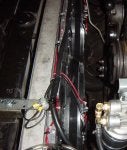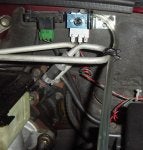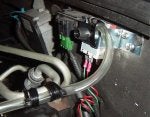Hello All,
I finally completed my dual electric cooling fan installation. I used two (2) Bosch (manufactured for Volvo p/n 8649522) fans obtained from fleaBay. Each fan has an all-enclosed plastic shroud (see note later on this important feature), silent S-blades, a powerful motor that draws 18 amps and a 3,000+ CFM rating.
Pics #1 and #2 show the stock fan shrouds (upper and lower) removed from engine compartment. The first shows the clearance of the fan clutch from the radiator. The second shows a rear perspective of the radiator – if you zoom in to the bottom of the radiator, you can just about see the 1/4" gap, about 3/4" deep, between the radiator and the lip of the radiator support. This will be used to anchor the base of the dual electric fan assembly
I finally completed my dual electric cooling fan installation. I used two (2) Bosch (manufactured for Volvo p/n 8649522) fans obtained from fleaBay. Each fan has an all-enclosed plastic shroud (see note later on this important feature), silent S-blades, a powerful motor that draws 18 amps and a 3,000+ CFM rating.
Pics #1 and #2 show the stock fan shrouds (upper and lower) removed from engine compartment. The first shows the clearance of the fan clutch from the radiator. The second shows a rear perspective of the radiator – if you zoom in to the bottom of the radiator, you can just about see the 1/4" gap, about 3/4" deep, between the radiator and the lip of the radiator support. This will be used to anchor the base of the dual electric fan assembly



